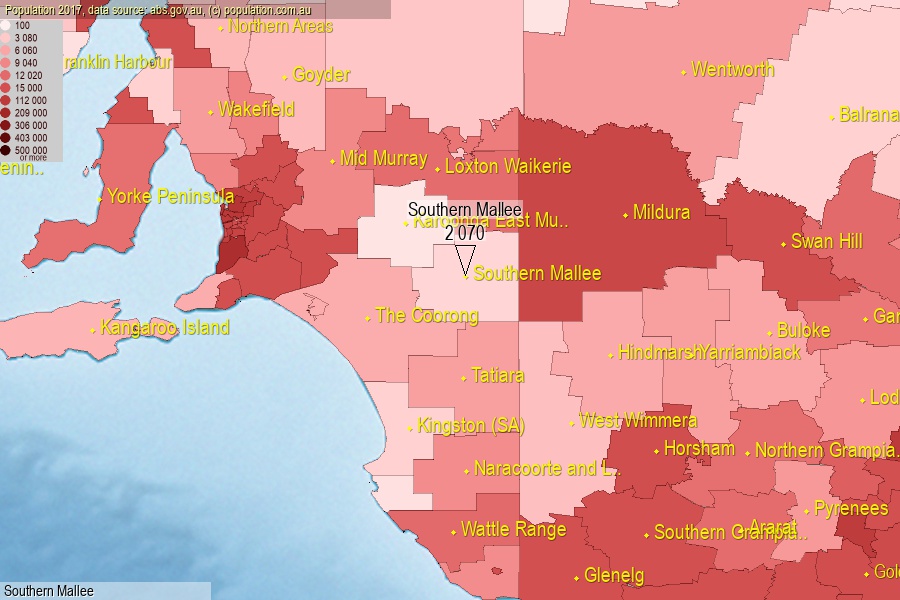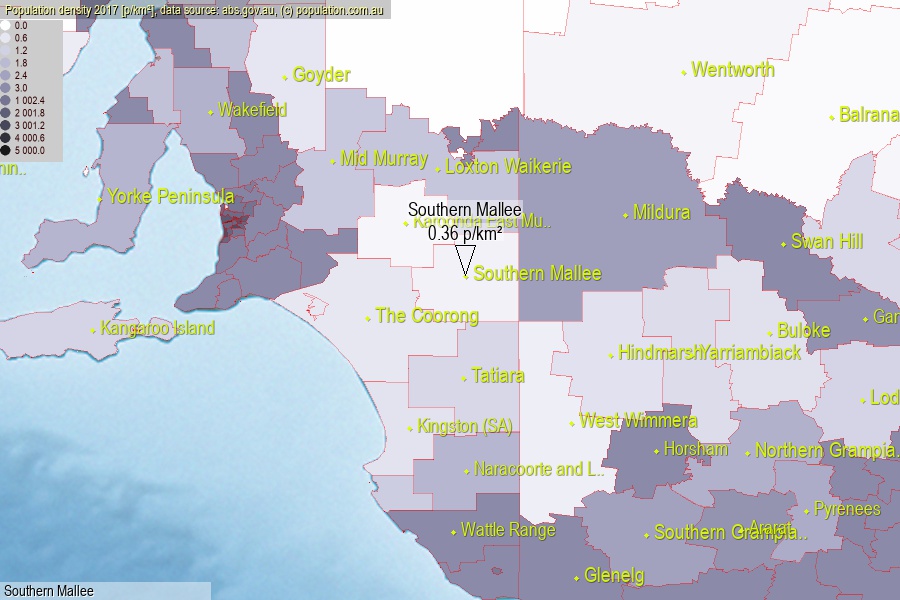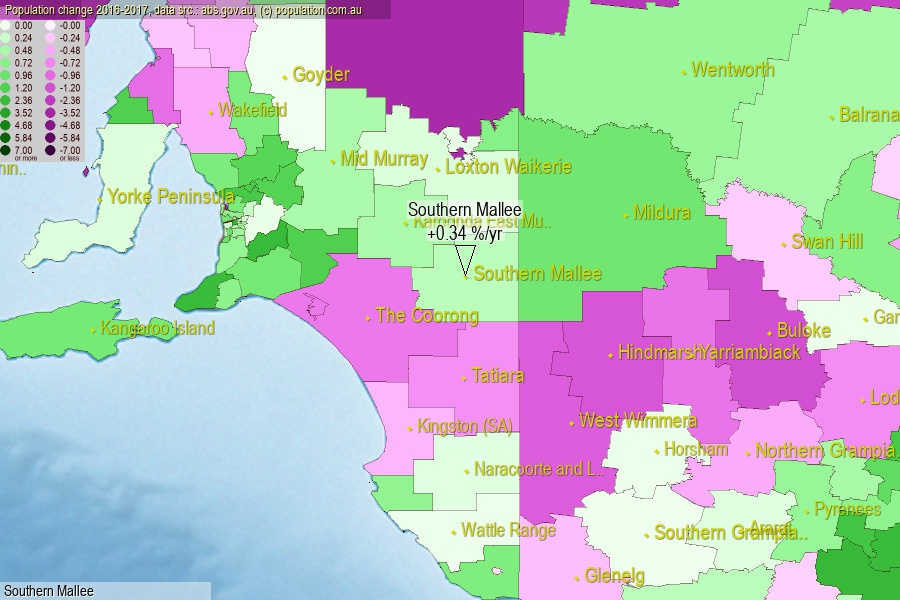 population.com.au
population.com.auLast official estimated population of Southern Mallee District Council (as Local Government Area) was 2 070 people (on 2017-06-30)[2]. This was 0.01% of total Australian population and 0.119% of SA population. Area of Southern Mallee is 5 702.20 km², in this year population density was 0.36 p/km² . If population growth rate would be same as in period 2016-2017 (+0.34%/yr), Southern Mallee population in 2025 would be 2 127. [0]



Click to enlarge. Southern Mallee is located in the center of the images.
Population [people], population density [p./km²] and population change [%/year] [2]
[1996-2001] -0.91 %/Y
[2001-2002] -1.65 %/Y
[2002-2003] -1.46 %/Y
[2003-2004] -0.85 %/Y
[2004-2005] -0.59 %/Y
[2005-2006] -0.46 %/Y
[2006-2007] -0.50 %/Y
[2007-2008] -0.51 %/Y
[2008-2009] -0.46 %/Y
[2009-2010] -0.84 %/Y
[2010-2011] -0.66 %/Y
[2011-2012] -0.75 %/Y
[2012-2013] -0.90 %/Y
[2013-2014] -0.72 %/Y
[2014-2015] -0.72 %/Y
[2015-2016] +0.24 %/Y
[2016-2017] +0.34 %/Y
[0] Calculated with linear interpolation from officially estimated population
[1] Read more about LGA and Australian Statistical Geography Standard (ASGS) on abs.gov.au
[2] Population data from Australian Bureau of Statistics (Population and density: 2017; change: 2016-2017)
[3] Digital Boundaries: Australian Statistical Geography Standard (ASGS) 2016.